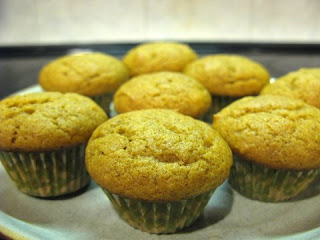More on the mercury in HFCS studies
>> Wednesday, January 28, 2009
Dr. James Hubbard from James Hubbard's My Family Doctor Magazine, one of my favorite sites and magazines, asked a good question in the comments section of my last post on the studies that have shown mercury in HFCS. I thought that I would pull out his question and my answer and post it for those of you that might want just a bit more information on this.
Dr. Hubbard asks: Do you know if this is methylmercury or another type. If another, does the FDA have an acceptable limit, say for prenant women?
The studies looked at total mercury content measured by atomic absorption. They did NOT look at the form that the mercury is in. It may be methylmercury, but it is more likely elemental mercury or mercury in another form (just an educated guess given its source).
Methylmercury is a dangerous form of mercury that accumulates in fish. The USDA has set limits on methylmercury consumption - 0.1 micrograms/kg/day (according to one of the journal articles). No limits have been set on total mercury or elemental mercury consumption. In the Environmental Health article, they estimate a potential total mercury consumption of 28.5 micrograms/day per person from mercury-contaminated HFCS consumption.
The FDA has set a limit of 1 ppm methylmercury in fish. The limit started as 0.5 ppm total mercury in 1969, but was raised to 1 ppm total mercury. In 1984, they changed the limit to 1 ppm methylmercury only. There is no limit on total mercury in fish. (And, as you can imagine, these limits are fairly controversial.) The mercury levels in the products tested in the second study were all in the ppt (parts per trillion) range - much lower than the 1 parts per million level set for fish.
Mercury is toxic in whatever form it takes, but certain forms are more dangerous than others. Methylmercury is easily absorbed by our bodies and can cross the blood/brain barrier with relative ease. Elemental mercury isn't absorbed nearly as easily by our bodies, but it is still a toxic element that can accumulate in our bodies and potential cause cumulative problems over time.
I don't think that we need to panic because of these reports (though I am glad that we're not consuming HFCS anymore!), but it is clear to me that this needs to be thoroughly investigated by the FDA and the manufacturers - especially as we don't know the form that the mercury is in. The information presented in these articles is disturbing, and they raise as many questions as they answer. With a public that consumes such large quantities of HFCS on a daily basis - and especially children who are particularly vulnerable to developmental effects from mercury in any form - we need to take this seriously.
More for your reading pleasure at other blogs with various perspectives on this subject:
Fatfighter TV (a very nice overview of the articles)
Consumer Reports
Junkfood Science
Daddy Types
The Green Fork



















